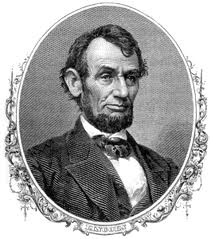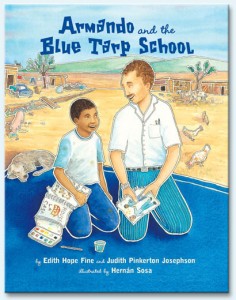Straight quotes, curly quotes, ellipses: what’s a writer to do?
 We (Edith Hope Fine and Judith Josephson) are the Grammar Patrol. Both of us taught for years and are now writers, with thirty plus books between us, including our two popular grammar guides, Nitty-Gritty Grammar and More Nitty-Gritty Grammar. For close to twenty years, we taught writing and grammar basics and now we blog about grammar for writers.
We (Edith Hope Fine and Judith Josephson) are the Grammar Patrol. Both of us taught for years and are now writers, with thirty plus books between us, including our two popular grammar guides, Nitty-Gritty Grammar and More Nitty-Gritty Grammar. For close to twenty years, we taught writing and grammar basics and now we blog about grammar for writers.
 Writing with word processing software gives you more options than the old days of typewriters, but it also gives you gives you more ways to get into trouble. Most of us have twigged to the difference between the typewriter’s straight quotation marks and computer-generated curly ones. You’ll often hear the latter called curly quotes or smart quotes. If Honest Abe is reciting the Gettysburg address, the curly quotation that marks the beginning of his speech, should face the words—they’ll resemble the number 66: “Four score and seven years ago . . .” At the end of his speech, the marks form a 99: “shall not perish from the earth.”
Writing with word processing software gives you more options than the old days of typewriters, but it also gives you gives you more ways to get into trouble. Most of us have twigged to the difference between the typewriter’s straight quotation marks and computer-generated curly ones. You’ll often hear the latter called curly quotes or smart quotes. If Honest Abe is reciting the Gettysburg address, the curly quotation that marks the beginning of his speech, should face the words—they’ll resemble the number 66: “Four score and seven years ago . . .” At the end of his speech, the marks form a 99: “shall not perish from the earth.”
The same goes for single quotes, but they’re like the numerals 6 and 9: “I’ll call you ‘Wart-Nose’ if I like,” yelled Dorothy at the Wicked Witch.
Do use straight quotes (‘ or “), not curly quotes, to indicate feet and inches: 42′ 9″. (Note that the period goes outside because the quotation mark indicates inches, not a direct quotation.)
Details, details, details . . .
Ellipses: “Wait. What was I saying . . .?”
Those three dots that can indicate your brain’s gone on vacation are called an ellipsis. Handily, the word is from the Greek word meaning “omission.”
TIP: For spacing and punctuation with ellipses, treat ellipses as word substitutes. Punctuate and space ellipses as you would actual words.
Forming ellipses (yep, that’s the plural):
• Form an ellipsis with three dots: . . .
• Put spaces between the dots. Like this: . . . Not this: … (Incorrect, autocorrect!)
Tips on ellipses:
• Use an ellipsis as a placeholder for words omitted from a quoted sentence.
Luis Urrea’s Into the Beautiful North begins, “The bandidos came to the village at the worst possible time. Of course, everyone in Mexico would agree that there is no particularly good time for bad men to come to town.”
To shorten that hook of an opener, use an ellipsis:
“The bandidos came to the village at the worst possible time. Of course, . . . there is no particularly good time for bad men to come to town.”
The deletion doesn’t change the meaning, just the length.
• This deletion is a cheat:
Movie review: “Wow. The 21st century may never see a more stupid comedy than this one.”
Ad copy: “Wow. 21st century . . . comedy.”
Note the space before and after the ellipsis.
• Here, the ellipsis indicates pauses, hesitation, or words trailing off:
“No, I’m . . .,” the Cheshire Cat yawned.
• If a sentence ends where the omission begins, keep the period, then put the ellipsis—a total of four dots:
“Wilbur never forgot Charlotte. . . . It is not often that someone comes along who is a true friend and a good writer.”
• Other examples:
“How doth the little busy bee . . .?” begins Lizzie’s favorite poem.
Snoopy’s stories always begin, “It was a dark and stormy . . .”
• Don’t begin an indented quoted passage with ellipses.
 “Wow. How cool is . . .?” said the speechless Grammar Patrol upon learning that their Armando and the Blue Tarp School children’s book has been named a companion book to Luis Urrea’s Into the Beautiful North by One Book, One San Diego 2012!
“Wow. How cool is . . .?” said the speechless Grammar Patrol upon learning that their Armando and the Blue Tarp School children’s book has been named a companion book to Luis Urrea’s Into the Beautiful North by One Book, One San Diego 2012!
What tricks have you found for when your curly quotes go in the wrong direction? Let us know. And remember to send in great bloopers you see and hear. We’re collecting more and will post soon.
Tags: ellipses, grammar, punctuation, quotation marks
July 11th, 2012 at 3:12 pm
Thank you! Thank you! Thank you! I have always been uncertain about how to use ellipses so I either use too many or too few or I space them too far apart or too close. Now I get it!
July 11th, 2012 at 3:21 pm
I would like to have my junior high school students read this. It was always one of my hardest lessons to teach. Well done, Grammar Patrol! Great blog!
July 13th, 2012 at 12:37 pm
Thanks, you two. This is the reason that even the Grammar Patrol keeps grammar books by the computer. Yes, we blush to admit, NGG and MNGG are among them. We consulted close to 50 reference books in writing those guides. That makes us grammar wonks, right? Keep sending your biggest grammar peeves and the great bloopers you spot or hear!
October 17th, 2012 at 10:35 pm
Very useful post, Grammar Patrol.
October 21st, 2012 at 12:05 pm
Thanks, Deborah,
High praise from such an experienced editor!
The Grammar Patrol
September 30th, 2015 at 4:45 pm
What about computer-generated ellipsis created by holding down the Option Key and the semi-colon key?